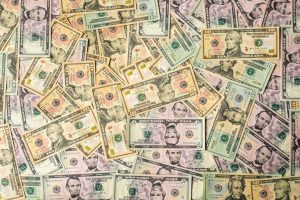Forex, also known as foreign exchange or FX, is a decentralized global market where currencies are traded. It is the largest market in the world with an average daily trading volume of around $5 trillion. Forex trading is the act of buying and selling currencies with the aim of making a profit. In this article, we will provide a full course on how to use forex.
1. Understanding the basics
Before you start trading in the forex market, it is essential to understand the basics. You need to know what forex is, how it works, and the different currency pairs that are available for trading. You should also understand the factors that affect currency prices, such as economic data, political events, and market sentiment.
2. Choosing a broker
To trade in the forex market, you need to choose a broker. A broker is a company that provides a platform for you to trade currencies. When choosing a broker, you should consider factors such as regulation, fees, trading platforms, and customer support. It is recommended to choose a regulated broker to ensure that your funds are safe.
3. Opening a trading account
Once you have chosen a broker, you need to open a trading account. The process of opening a trading account is straightforward and usually involves filling out an online application form. You will need to provide personal information, such as your name, address, and contact details. You will also need to verify your identity by providing a copy of your passport or ID card.
4. Funding your account
After opening a trading account, you need to fund it. This involves depositing money into your account using a payment method provided by your broker. The most common payment methods include bank transfer, credit/debit card, and e-wallets. You should choose a payment method that is convenient and secure for you.
5. Choosing a trading strategy
To trade in the forex market, you need to have a trading strategy. A trading strategy is a set of rules that you follow when opening and closing trades. There are many trading strategies available, such as scalping, day trading, swing trading, and position trading. You should choose a trading strategy that suits your trading style and personality.
6. Using technical analysis
Technical analysis is the study of past price and volume data to predict future price movements. It involves using charts and indicators to identify patterns and trends in the market. You should learn how to use technical analysis to make informed trading decisions. Some popular technical indicators include moving averages, Bollinger Bands, and MACD.
7. Using fundamental analysis
Fundamental analysis is the study of economic and political events to predict currency prices. It involves analyzing economic data, such as GDP, inflation, and interest rates, as well as political events, such as elections and policy decisions. You should learn how to use fundamental analysis to understand the underlying factors that drive currency prices.
8. Managing risk
Risk management is an essential aspect of forex trading. You should learn how to manage your risk by using stop-loss orders, position sizing, and risk-reward ratios. Stop-loss orders are orders that automatically close your trades if the market moves against you. Position sizing is the process of determining the size of your trades based on your account balance and risk tolerance. Risk-reward ratios are the ratio of potential profit to potential loss on a trade.
9. Keeping a trading journal
Keeping a trading journal is a useful tool for improving your trading performance. A trading journal is a record of your trades, including the entry and exit prices, the reason for opening the trade, and the outcome. By keeping a trading journal, you can analyze your performance, identify your strengths and weaknesses, and make improvements to your trading strategy.
In conclusion, forex trading can be a profitable and exciting venture if done correctly. By understanding the basics, choosing a broker, opening a trading account, funding your account, choosing a trading strategy, using technical and fundamental analysis, managing risk, and keeping a trading journal, you can become a successful forex trader. It is important to remember that forex trading involves risk, and you should only trade with money that you can afford to lose.





